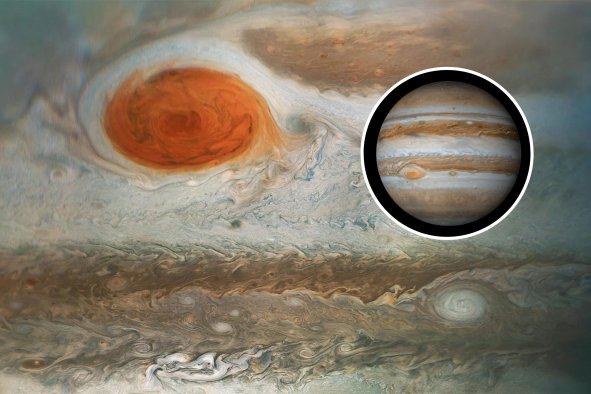Scientists have discovered a surprising source of winter water in an area of Arizona, according to a new study.
The study focused on the Sun Corridor—a region known for being one of the fastest-growing metropolitan areas in the U.S. The area in Phoenix, Arizona, is facing an uncertain future largely due to threats on water supply brought on by drought and unpredictable seasonal patterns.
The researchers noted that the Salt-Verde watershed, which is a crucial water source for Phoenix, located north-northeast of the city, feeds a series of rivers that supply about half the municipal, industrial, and agricultural water needs of the region.
The study, published in the Journal of Geophysical Research: Atmospheres and led by a team of researchers from Arizona State University (ASU), Salt River Project (SRP), and Universidad de Santiago de Compostela in Spain, mainly found that the primary moisture source for winter precipitation in Arizona is not from the equatorial tropical Pacific region typically associated with El Niño/La Niña events.
Instead, the key source area lies between 140°W and 100°W, excluding the traditional El Niño/La Niña zones. This area, closer to the U.S.-Baja coastline, plays a crucial role in providing moisture for Arizona's winter precipitation.
To reach these findings, the researchers used an advanced weather model.
"We have identified the main moisture source region for wintertime precipitation across Arizona's mountains," Matei (Matt) Georgescu, an associate professor in Arizona State University's School of Geographical Sciences and Urban Planning and the director of the Urban Climate Research Center said in a statement. "This is a critical step in allowing us to improve seasonal precipitation forecasts for Arizona and potentially other regions across the globe as well."
Bohumil Svoma, a meteorologist at SRP and co-author of the study, noted the unexpected importance of evaporation from the Pacific Ocean near North America for the Salt-Verde watershed.
"In the western U.S., much attention is given to atmospheric river events that bring moisture to the West Coast from subtropical areas farther west in the Pacific," Svoma said. "Since El Niño events tend to result in wet winters for Arizona, it was surprising that this central Pacific moisture source is not as important for Arizona precipitation."
Previous research by Svoma and Georgescu, led by ASU Ph.D. student Joseph Karanja, found that standard El Niño/La Niña metrics do not determine spatial and temporal changes in observed wintertime precipitation for the Southwestern U.S. effectively enough.
This current study used the Weather Research and Forecasting (WRF) model to simulate precipitation for different types of El Niño/La Niña winters, revealing that the new source area significantly influences precipitation patterns.
"Our work sheds new light by highlighting that the standard El Niño/La Niña region may be less important, at least in terms of direct water vapor transport for Arizona seasonal/winter precipitation than previously thought," Georgescu said. "Rather than focusing attention on sea surface temperature variability over the El Niño 3.4 region, we need to pay greater attention to sea surface temperatures closer to the U.S.-Baja coastline."
The researchers believe this tool can be valuable for water managers to better understand the sources of water that contribute to precipitation during storms or seasons. While the findings are specifically applicable to Arizona, the methodology could be used in other regions as well.
"Climate model projections of winter precipitation in Arizona are highly uncertain," Svoma said. "Detailed research about the current climate is an important initial step for advancing our understanding of future precipitation in Arizona. This research is critical for long-term water supply planning in Arizona."
Do you have a tip on a science story that Newsweek should be covering? Do you have a question about this study? Let us know via science@newsweek.com.
Disclaimer: The copyright of this article belongs to the original author. Reposting this article is solely for the purpose of information dissemination and does not constitute any investment advice. If there is any infringement, please contact us immediately. We will make corrections or deletions as necessary. Thank you.



